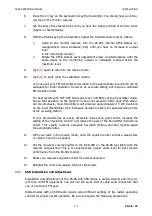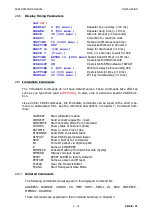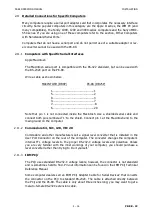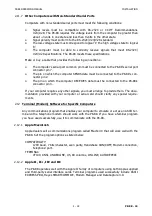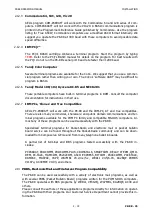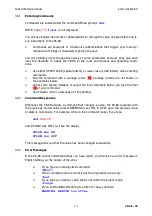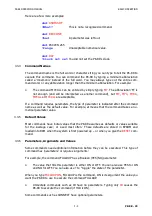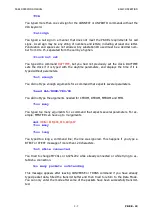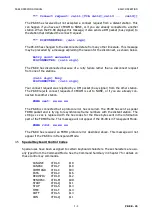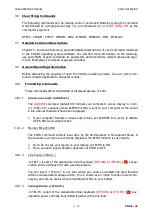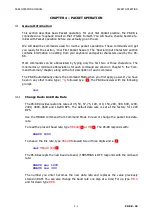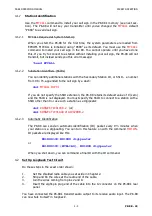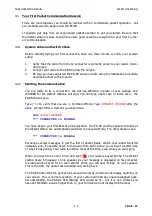
PK-88 OPERATING MANUAL
BASIC OPERATION
3 - 1
PK-88 - 37
CHAPTER 3 – BASIC OPERATION
3.1
Exploring the PK-88 Program
This chapter shows you how to use the PK-88, describes the keyboard commands you will
use to 'talk' to the PK-88, and the answers, prompts and error messages you will receive
from the PK-88.
3.2
LED Status and Mode Indicators
The PK-88's front-panel LEDs show you the operating mode and status at any moment. Each
LED is marked with an abbreviated name. Scan the PK-88's front panel as we review the
LEDs and their meanings. The following LEDs show the operating mode:
CONV
Converse
Lit when in Converse Mode
TRANS
Transparent
Lit when in Transparent Mode
CMD
Command
Lit when in Command Mode
3.2.1
Status Indicator LEDs
The following LEDs show system status:
SEND
Send
Lit when PTT line is enabled
DCD
Data Carrier Detect
Lit when receiving signal
STA
Status
Lit when unacknowledged frames exist, or blinks when
the MailDrop has message snot yet read by the owner
(MYCALL)
CON
Connected
Lit when valid connect state exists
MULT
Multiple
Lit when multiple connection exists, or blinks when the
receive buffer is full.
3.2.2
The DCD LED - Data Carrier Detect
The DCD LED is an indicator of channel activity. When another station transmits, the DCD
LED on the PK-88 should light for the duration of the received packet frame. If the DCD
LED is lit by random noises, reduce your receiver's output volume control until the LED
goes out. Valid packets received should always light the DCD LED.
3.2.3
LEDs at System Start
After the PK-88 has been initialized at system start, or each time you type
RESTART
, the
PK-88 should be in command mode.
CMD lit
The PK-88 is in Command Mode.
3.3
Commands
The PK-88 Packet-Radio Controller is a command-driven system. All control functions are
performed by typing single- and multiple-character commands from your computer's key-
board. Menus are not used.
Commands can specify the variable values of the parameters that affect the PK-88's opera-
tion and its performance during specific actions.



